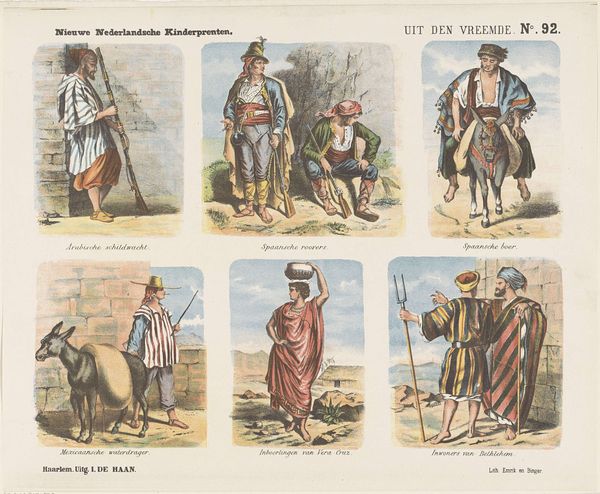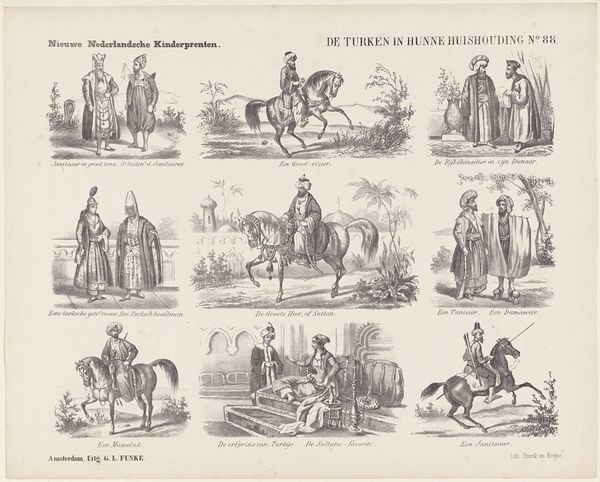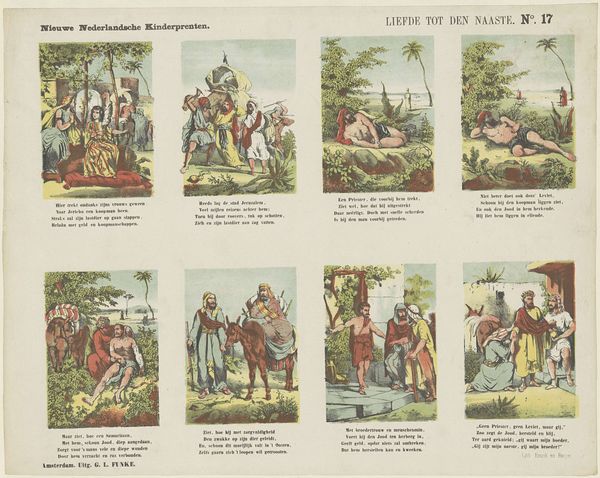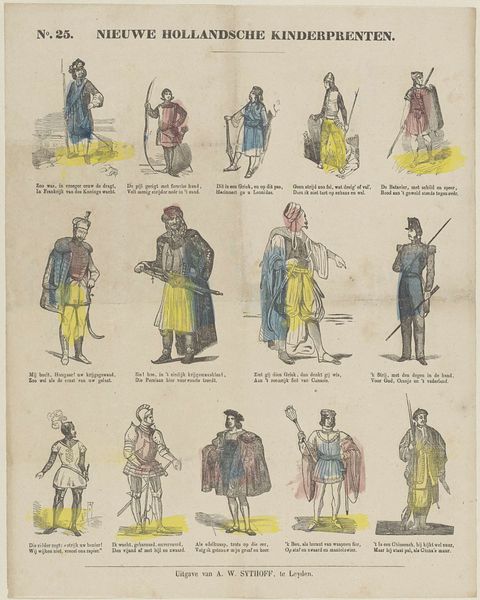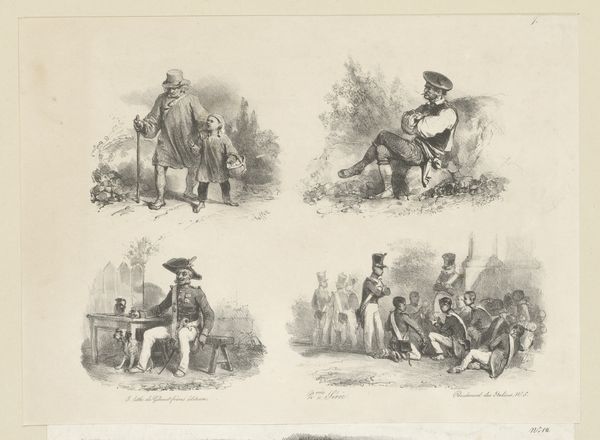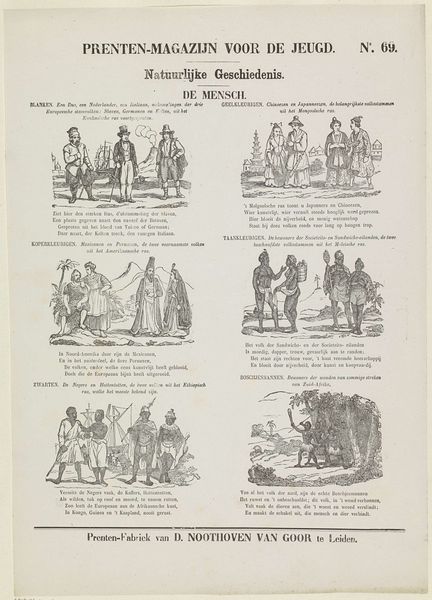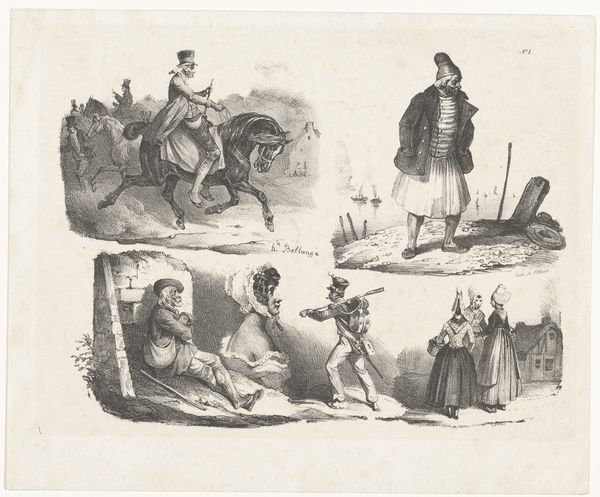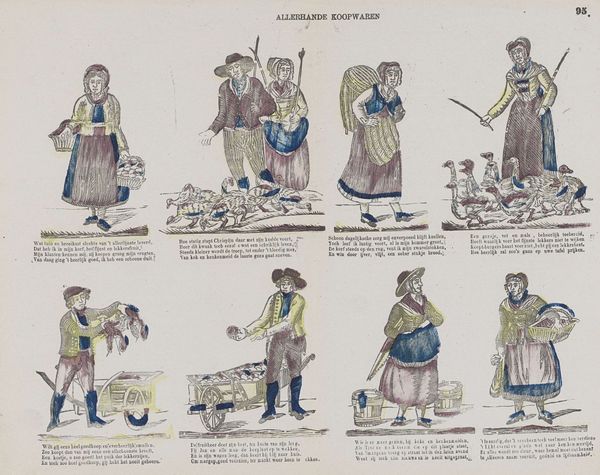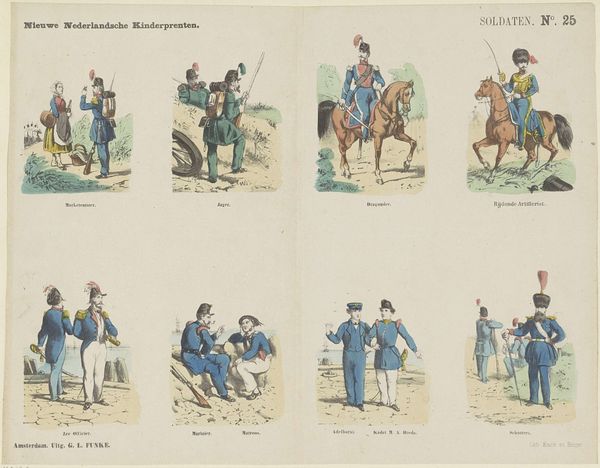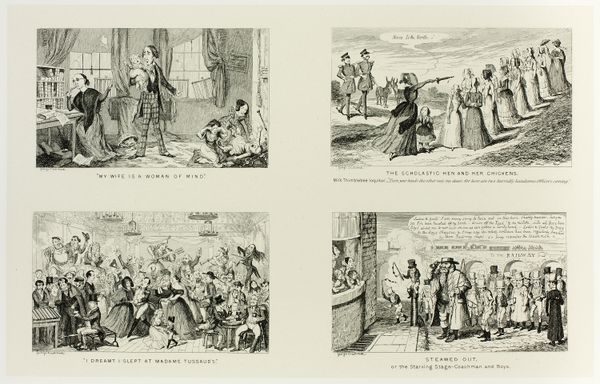
drawing, graphic-art, print, engraving
#
drawing
#
graphic-art
#
narrative-art
# print
#
figuration
#
genre-painting
#
academic-art
#
engraving
Dimensions: height 336 mm, width 430 mm
Copyright: Rijks Museum: Open Domain
Editor: So, this print is called "Uit den Vreemde," or "From Abroad," made sometime between 1865 and 1875 by George Lodewijk Funke. It seems to depict different figures from around the world, almost like ethnographic studies. What do you see in this piece beyond its face value? Curator: I see a visual catalog deeply entrenched in 19th-century European imperialism. The print presents a carefully constructed image of "the other," categorizing and displaying people from different cultures as if they were specimens. Note how each figure is labeled—"Arabian Guard," "Spanish Farmer"—reducing them to types rather than individuals. How might this reinforce a sense of European superiority? Editor: I see what you mean. It’s like a collection of postcards from exotic locations, but with a controlling, almost objectifying gaze. Is the choice of medium, engraving, also relevant to this? Curator: Absolutely. Engraving, as a reproducible medium, allowed for widespread dissemination of these images, solidifying and perpetuating stereotypes. The "Neue Nederlandsche Kinderprenten" title is also telling. This imagery was meant to educate children, shaping their understanding of the world and their place within it. Editor: So, it's not just about depicting different cultures, but also about teaching a specific, and potentially biased, worldview? It's a kind of cultural curriculum presented as art? Curator: Precisely. Consider the power dynamics at play: a Dutch artist representing people from different lands for a Dutch audience. Who has the power to define and represent whom, and what are the implications of that power? What ideologies might these representations uphold or challenge? Editor: It definitely makes me see it differently. What initially seemed like a simple depiction of different people now seems heavy with historical and social implications. Curator: Recognizing these power dynamics and questioning the representations presented to us is essential.
Comments
No comments
Be the first to comment and join the conversation on the ultimate creative platform.
